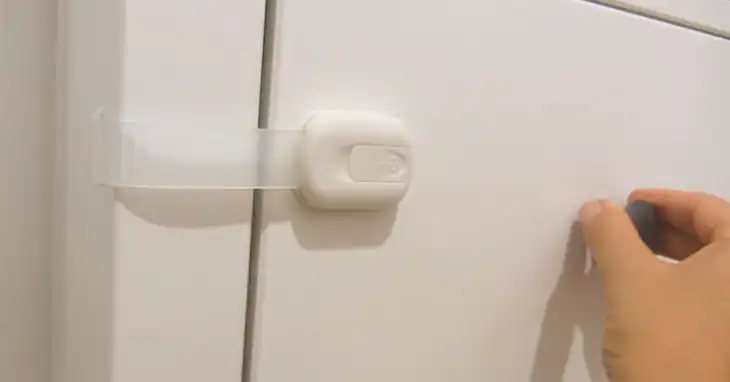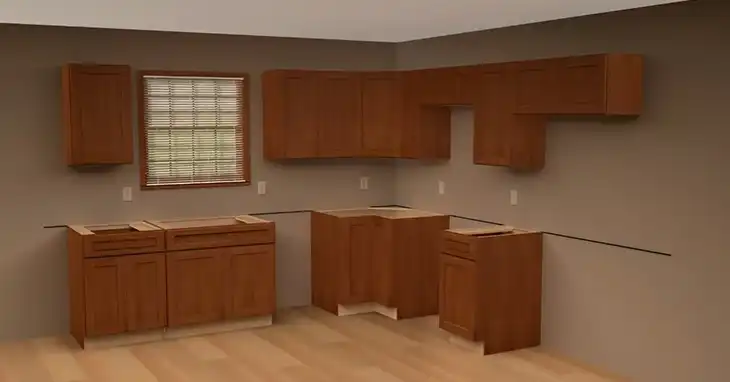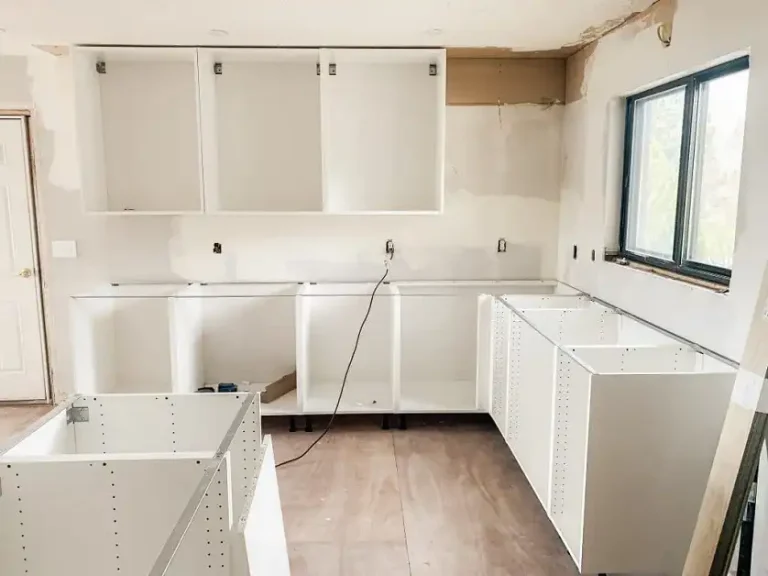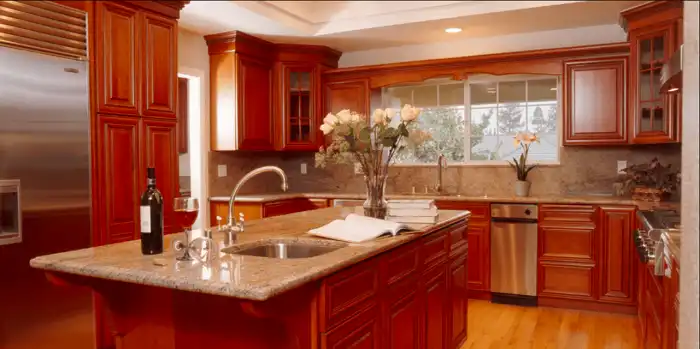How to Clean Bathroom Cabinets
Bathroom cabinets are often neglected when it comes to cleaning, but they can accumulate dust, grime, and even mildew over time. Properly maintaining them not only keeps your bathroom looking neat but also prolongs the life of your cabinets.
Cleaning bathroom cabinets thoroughly involves more than just wiping the surfaces; you need to address the interior, exterior, and hardware. This article is all about finding the right approach to do just that. So, stay tuned.
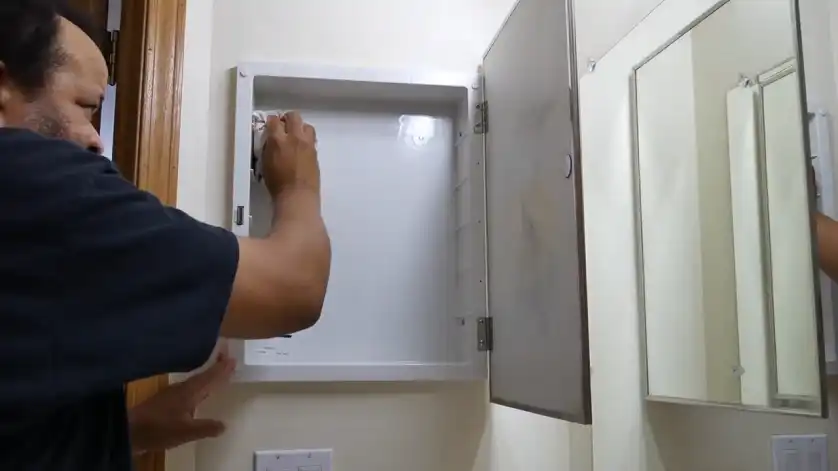
How Do You Clean Dirty Bathroom Cabinets?
Here’s a comprehensive guide on how to clean bathroom cabinets, ensuring they stay fresh, functional, and aesthetically pleasing.
Materials You’ll Need:
- Mild dish soap or vinegar
- Warm water
- Microfiber cloths
- Soft-bristle brush or toothbrush
- Baking soda (for tough stains)
- Disinfecting wipes (optional)
- Vacuum cleaner (with a small attachment for crevices)
- Wood polish (if your cabinets are wooden)
Step-by-step guide to clean bathroom cabinets:
1. Clear Out the Cabinets
Before cleaning, remove all items from the cabinets, including toiletries, towels, and any personal items. This gives you full access to the interior and exterior of the cabinet for a thorough cleaning.

Tip: While you’re emptying the cabinets, take the opportunity to dispose of expired products and organize items for a cleaner, clutter-free cabinet once you’re done.

2. Dust and Vacuum
Dust or dirt can accumulate, especially in the corners or around hinges. Use a dry microfiber cloth to wipe away surface dust.

A vacuum cleaner with a small attachment is great for reaching tricky corners and inside crevices. Be sure to vacuum the corners and edges of the drawers and shelves.
3. Wipe Down with a Cleaning Solution
Next, prepare a gentle cleaning solution. Mix a few drops of mild dish soap with warm water, or, for a more natural approach, combine one part vinegar with two parts water. Dampen a microfiber cloth with the solution and wipe down the interior and exterior surfaces of the cabinets.

Pay special attention to the handles, knobs, and edges where grime or fingerprints tend to accumulate.

Tip: Avoid soaking the cloth to prevent excess moisture, especially on wood cabinets, which can warp or crack when too wet.
4. Clean the Hinges and Hardware
Bathroom cabinet hinges and hardware can collect grime over time, especially if they are touched often. Use a soft-bristle brush or an old toothbrush to scrub any buildup around the hardware. If needed, you can dip the brush into a mix of water and dish soap or vinegar.

For Metal Hardware: Wipe the handles with a cloth dipped in the same soapy water solution. For extra shine, you can also use a metal polish if your hardware is brass or stainless steel.
5. Clean the Cabinet Doors and Exterior
Don’t forget to clean the outside of your bathroom cabinets. Wipe down the cabinet doors, sides, and any decorative elements with the same cleaning solution. If you have wood cabinets, avoid using harsh chemicals that could damage the finish.
For wooden cabinets, follow up with a wood polish to maintain their shine and protect the finish. Always use a polish specifically formulated for wood to avoid leaving a greasy residue.
6. Dry Thoroughly
Once you’ve finished cleaning, use a dry microfiber cloth to remove any excess moisture from the cabinet surfaces. This is especially important for wooden cabinets, as lingering moisture can cause warping or damage.
7. Replace and Organize Your Items
Now that your cabinets are clean, it’s the perfect time to declutter and organize. Before putting items back into the cabinets, wipe down the containers or bottles if needed. Use baskets or dividers to organize smaller items and make the most of your cabinet space.

How to Get Stains Out of Bathroom Cabinets?
Stains on bathroom cabinets are common due to splashes of water, soap residue, makeup, or even rust from metal objects. Here’s how to effectively remove stains without damaging the cabinet finish:
1. Water Stains
Water spots and rings, especially on wood cabinets, are caused by moisture penetrating the finish. To remove them:
- For Light Water Stains: Gently rub the area with a soft cloth and a mixture of baking soda and water. This should lift minor water spots without damaging the wood.
- For Deeper Stains: Apply a small amount of toothpaste (non-gel) directly to the stain and gently buff in a circular motion. Wipe it clean with a damp cloth, then dry the surface immediately.
2. Soap Scum and Grime
Soap scum can build up over time, leaving a film on the cabinet surface. For this:
- Use a solution of vinegar and water (1:2 ratio) or a mild dish soap mixed with warm water.
- Dip a microfiber cloth into the solution and gently scrub the stained area.
- For stubborn grime, apply the solution, let it sit for a few minutes, then scrub with a soft-bristle brush.
3. Makeup and Cosmetic Stains
Cosmetics like foundation, powders, or eyeliner can leave unsightly marks on cabinets. Here’s how to tackle them:
- For Powdery Stains: Dust off loose makeup with a dry cloth, then wipe the surface with a damp cloth using mild dish soap.
- For Oily Stains: Use a mixture of warm water and dish soap to break down the oils. If the stain persists, try a small amount of rubbing alcohol on a cloth, but test in an inconspicuous area first to ensure it doesn’t damage the finish.
4. Rust Stains
Rust stains from metal items, like shaving cans or nail clippers, can be stubborn. Here’s how to treat them:
- Make a paste using baking soda and water, then apply it to the rust stain. Let it sit for 15-20 minutes.
- Scrub gently with a soft cloth or brush, then wipe clean with a damp cloth.
5. Mold or Mildew Stains
Bathrooms are prone to mold and mildew due to moisture. If you notice black or greenish spots:
- Mix equal parts vinegar and water in a spray bottle. Spray the affected area and let it sit for a few minutes.
- Scrub gently with a brush to lift the mold or mildew.
- For more severe cases, use a commercial mold cleaner or diluted bleach, but be cautious as these can damage cabinet finishes.
Frequently Asked Questions
Can vinegar remove bathroom stains?
White vinegar is good at removing tough mineral stains like limescale and rust because it’s acidic. But for organic stains in your toilet bowl, you need a more alkaline solution.
How can I make my bathroom cabinets smell better?
Put an open box of baking soda in the cabinet and leave it there for a few days to absorb the bad smell. You can also make a paste with baking soda and water. Spread the paste on the cabinets and let it sit for a few hours before you wipe it off.
Conclusion
Cleaning bathroom cabinets can be a daunting task, but with the right approach and cleaning solutions, it can be achieved effectively. By following the tips and techniques outlined in this article, you can remove stubborn stains, eliminate odors, and restore your bathroom cabinets to their original shine.
Remember to regularly clean your cabinets to maintain a hygienic and visually appealing bathroom space. Thanks for reading!

